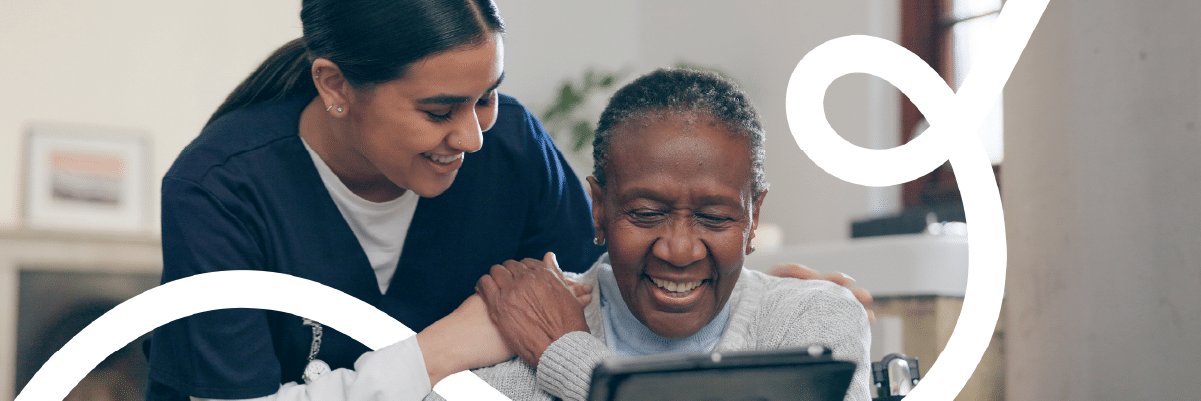It’s no secret the healthcare industry is grappling with a critical workforce shortage that’s reshaping the way care is delivered. This challenge, fueled by an aging population and rising care demands, has left many healthcare professionals overextended and burned out, driving some to leave the profession altogether. Yet, as we begin a new year, the outlook for the workforce crisis does not look much brighter. With fewer hands to manage an increasing patient load, healthcare leaders are turning to innovative strategies to extend resources while maintaining high-quality care.
Deloitte’s 2025 US Healthcare Outlook highlights this shift, revealing that 1 in 3 health system executives are prioritizing tech investments for 2025, while 60% of health plans anticipate an increase in transformative tech adoption.
So, is digital health tech the answer? Addressing the healthcare workforce crisis requires a multi-faceted approach, but innovative digital health tech might just be the lifeline the industry needs. Whether it is supporting healthcare practices, health systems, home health, or payer organizations, technologies like remote patient monitoring (RPM), personal emergency response systems (PERS), and AI-powered virtual health assistants can bridge gaps in care, improve efficiency and provide critical support for patients and individuals living at home. Below are three ways these technologies are helping to close workforce gaps in healthcare:
1. Supporting Care Teams and Patients with Remote Patient Monitoring
RPM technology enables healthcare providers to monitor patients’ vital signs, symptoms, and health conditions remotely, reducing the need for frequent in-person visits. By regularly tracking metrics such as blood pressure, glucose levels, or oxygen saturation, RPM alerts care teams to potential health issues before they escalate.
For example, a patient with a chronic condition like hypertension can be closely monitored at home, with care teams notified of concerning trends. This enables earlier interventions that help reduce hospital admissions and emergency room visits while easing the burden on already strained healthcare staff. Additionally, one nurse can effectively monitor over 100 patients at any given time, optimizing resource allocation and enabling focus on those requiring immediate or more complex care.
What’s more, certain RPM companies offer full-service clinical monitoring support by nursing staff, maximizing program effectiveness and further reducing the workload for the practice.
2. Enhancing Safety and Independence with PERS
Personal emergency response systems help older adults and vulnerable individuals live safely at home. Equipped with features like fall detection, advanced GPS and one-touch emergency communication, these systems provide peace of mind for seniors, families and caregivers.
For healthcare payers and home care providers, PERS can extend resources by reducing the demand for continuous, in-person supervision while ensuring rapid response in emergencies. For providers, PERS can act as an extension of the care team, providing critical support that often leads to fewer unnecessary ED visits and hospitalizations.
3. Delivering 24/7 Support with AI Virtual Health Assistants
AI-powered virtual health assistants handle a variety of tasks, including answering patient questions, delivering health education, triaging symptoms and sending medication reminders.
AI virtual health assistants free up valuable time for healthcare professionals by automating routine administrative and clinical tasks. They also improve patient and member engagement by providing around-the-clock support, and filling care gaps when resources are limited.
Benefits of Implementing Connected Care Technology to Address Workforce Challenges
For healthcare payers and providers, connected care technology can help address many of the current workforce challenges while offering many benefits, such as:
- Extending Resources: Automate and enhance care delivery to reach more patients without increasing staff workload.
- Reducing Burnout: Offload repetitive tasks to reduce stress for healthcare workers, allowing them to focus on high-value care.
- Improving Patient Outcomes: Early detection and timely interventions improve patient outcomes and lower the need for higher levels of care, easing pressure on the healthcare system.
- Empowering Patient Independence: Solutions like PERS and AI virtual health assistants enable patients to better manage their health, reducing their reliance on direct care.
Looking Ahead
As the healthcare workforce shortage persists, adopting connected care technologies will become imperative. Solutions like RPM, PERS, and AI-powered virtual health assistants not only address immediate challenges of the workforce crisis but also lay the groundwork for more sustainable, patient-centered healthcare. By leveraging these tools, healthcare providers and payers can enhance efficiency, bridge care gaps, and ensure patients receive the support they need.

